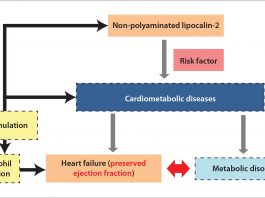A new study by University of Arizona Health Sciences has found that a genetically engineered T-cell is able to target and attack pathogenic T-cells that cause Type 1 diabetes, potentially leading to new immunotherapy treatments.
The immune system fights pathogens by utilising several types of T-cells, all of which have receptors that are specific to antigens. On pathogenic T-cells, the receptor works in concert with three signalling modules and a coreceptor to destroy the infected cell.
Michael Kuhns, PhD, an associate professor in the UArizona College of Medicine – Tucson Department of Immunobiology, copied the evolutionary design to engineer a five-module chimeric antigen receptor, or 5MCAR, T-cell. Kuhns said: “The 5MCAR was an attempt to figure out if we could build something by biomimicry, using some of evolution’s natural pieces, and redirect T-cells to do what we want them to do. We engineered a 5MCAR that would direct killer T-cells to target autoimmune T-cells that mediate Type 1 diabetes. So now, a killer T-cell will actually recognise another T-cell. We flipped T-cell-mediated immunity on its head.”
Dr Kuhns worked with Thomas Serwold, PhD, of the Harvard Medical School-affiliated Joslin Diabetes Center, to test the 5MCAR T cells in a non-obese diabetic mouse model with promising results. Serwold said: “When we saw that the 5MCAR T cells completely eliminated the harmful T-cells that invaded the pancreas, we were blown away. It was like they hunted them down. That ability is why we think that 5MCAR T-cells have tremendous potential for treating diseases like Type 1 diabetes.”
Dr Kuhns believes that by mimicking the form and function of a natural T-cell, including its complex five-module structure, researchers will be able to target antigens with greater sensitivity in the future.
Kuhns said: “I’m generally of the belief that evolution converges on related principles to execute related tasks. Basic research from labs around the world, including ours, has helped us to understand the complex structure and function of the five-module molecular machines that have evolved to drive T-cell responses. We think these results show that a biomimetic approach holds promise for CAR engineering.”









